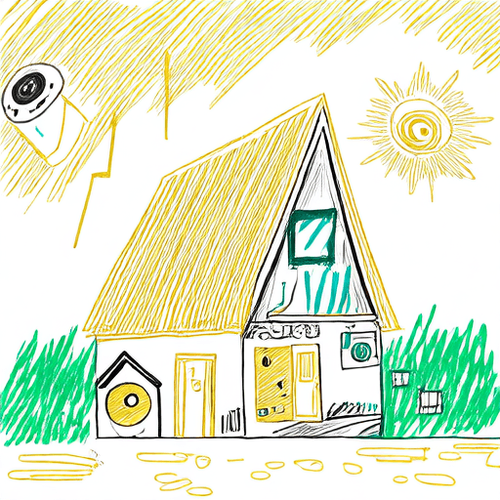Harmonizing Your Home: Integrating Music Assistant with Home Assistant for Unified Audio

NGC 224
DIY Smart Home Creator
Harmonizing Your Home: Integrating Music Assistant with Home Assistant for Unified Audio
In today's smart homes, we often juggle multiple music streaming services (Spotify, Tidal, Qobuz), digital libraries (local files, Plex), and a variety of playback devices (Google Cast, Sonos, DLNA/UPnP speakers, AirPlay). Managing this ecosystem can be fragmented and frustrating. Wouldn't it be great to browse all your music sources and send them to any player in your house from a single interface?
Enter Music Assistant. Designed specifically for Home Assistant, Music Assistant acts as a central hub, aggregating your music sources and players into a unified library and control interface. It leverages Home Assistant's existing device and automation capabilities to provide a powerful, flexible multi-room audio solution.
What is Music Assistant and Why Use It?
Music Assistant is an open-source project aiming to provide a complete, unified music experience within Home Assistant. Its core purpose is to:
- Unify Music Sources: Connect to various streaming services, local libraries, and media servers (like Plex or Emby) and combine them into a single, browseable library.
- Unify Players: Discover and control different types of audio players across your network, allowing you to send any music source to any compatible speaker or group of speakers.
- Enhance Discovery: Browse your entire music collection (local and streaming) together, making it easier to find music regardless of where it's stored or streamed from.
- Enable Advanced Control: Integrate playback control directly into Home Assistant dashboards and automations.
Using Music Assistant eliminates the need to switch between different apps for different services or players. It brings your entire audio world under the control of your Home Assistant instance.
Getting Started: Installation
Music Assistant is typically installed as an add-on for Home Assistant OS or Supervised installations, or as a separate Docker container for other installation types. The easiest method for many users is via the official Home Assistant Add-on store.
Installation via Home Assistant Add-on Store:
- Navigate to Settings -> Add-ons.
- Click on the Add-on Store button in the bottom right corner.
- Search for "Music Assistant".
- Select the "Music Assistant" add-on and click Install.
- Once installed, go to the add-on's configuration page.
- Enable Start on boot and optionally Watchdog for reliability.
- Start the add-on.
- Check the add-on's logs to ensure it starts correctly.
Installation via HACS (Custom Integration):
If you are running a different installation type or prefer HACS, you can install the Music Assistant custom integration:
- Ensure you have HACS installed in Home Assistant.
- Go to HACS -> Integrations.
- Click the + Explore & Download Repositories button.
- Search for "Music Assistant".
- Select the "Music Assistant" integration and click Download.
- Restart Home Assistant after the download is complete.
- Go to Settings -> Devices & Services -> + Add Integration.
- Search for "Music Assistant" and follow the setup wizard.
The HACS integration connects Home Assistant to a separately running Music Assistant instance (e.g., in Docker or a Python environment). The add-on is often simpler for Home Assistant OS/Supervised users as it bundles the server and integration.
Initial Configuration: The Setup Wizard
After installing and starting Music Assistant (either the add-on or the separate server), access its web interface. This is usually found at the IP address of your Home Assistant instance followed by port 8095 (e.g., http://your_ha_ip:8095) or accessible via "Open Web UI" on the add-on page. You'll be guided through a setup wizard:
- Welcome: Basic introduction.
- Core Settings: Configure data storage path (where the Music Assistant database and cache will be stored).
- Sources: This is where you add your music providers. Select from the list (Spotify, Tidal, Qobuz, file system, Plex, etc.) and enter credentials or path information. You can add multiple sources.
- Players: Music Assistant will automatically scan your network for compatible players (Cast, Sonos, DLNA/UPnP, etc.). You can also add manual player configurations if needed.
- Done: The wizard completes, and Music Assistant will start scanning your sources and players.
Integrating Sources and Players
Once the wizard is complete, or at any time via the Music Assistant settings page (accessibile via the web UI), you can manage your sources and players.
Adding Music Sources:
In the Music Assistant web UI, navigate to Settings -> Providers. Click the + button to add a new provider. Choose the provider type (e.g., Spotify, File system) and configure its settings. For streaming services, this involves authentication. For local files, you'll specify the network path where your music is stored. Music Assistant will then scan these sources and build its unified library.
Managing Players:
Music Assistant automatically discovers many player types. Go to Settings -> Players in the web UI. Here you can see discovered players, enable/disable them, and configure specific options if available. You can also manually add players if automatic discovery fails or for player types not automatically found.
Using Music Assistant within Home Assistant
The magic happens within Home Assistant itself. The Music Assistant integration exposes its functionality primarily through the Media Browser and media player entities.
Media Browser:
In the Home Assistant sidebar, click on Media. If the Music Assistant integration is set up correctly, you will see "Music Assistant" as a source. Clicking on it allows you to browse your unified library by artist, album, genre, playlist, or even explore combined features like "New Releases" pulled from all your streaming services.
From the Media Browser, you can select music and choose which Home Assistant media player entity to send it to. This works seamlessly with standard Home Assistant media cards on your Lovelace dashboard.
Media Player Entities:
Music Assistant creates Home Assistant media player entities for each player it manages. These entities function like any other media player in Home Assistant, allowing you to control playback (play/pause, skip, volume) and view media information directly from cards or automations.
Tips and Tricks for a Reliable Setup
- Network Stability: Streaming music, especially high-resolution audio or to multiple players simultaneously, is network-intensive. Ensure your Wi-Fi network is robust and consider using wired connections for static players or your Home Assistant server if possible.
- Player Compatibility: While Music Assistant supports many player types, compatibility can vary. Check the Music Assistant documentation for specific details on supported features for each player platform (e.g., Cast, Sonos, DLNA).
- Grouping Players: Music Assistant handles grouping players for synchronized multi-room audio. This functionality is managed within the Music Assistant web UI under the Players section. You can create permanent groups or group players dynamically for a playback session.
- Automations: Leverage Home Assistant automations! Trigger music playback based on events (e.g., play a specific playlist when motion is detected in the living room in the morning), use playback state in conditions, or announce messages over your players. Music Assistant media player entities provide the necessary states and services.
- Managing Large Libraries: If you have a vast local music collection, the initial scan can take a significant amount of time and resources. Be patient. Ensure the storage location for Music Assistant's data is on a fast and reliable drive.
- Stay Updated: Music Assistant is under active development. Regularly updating the add-on or integration ensures you have the latest features, bug fixes, and compatibility improvements with streaming services and players.
Best Practices for Management
To maintain a reliable Music Assistant integration:
- Monitor Resources: Music Assistant can consume notable CPU and memory, especially during scans or when managing many players/sources. Monitor your Home Assistant system resources to ensure it's not overloaded.
- Regular Backups: Include your Home Assistant configuration (which contains the Music Assistant integration settings) and, if possible, the Music Assistant data path in your regular backup strategy.
- Understand Your Network: Issues with player discovery or playback often stem from network problems (multicast not working, players on different subnets, firewall rules). Basic network troubleshooting is key.
- Check Logs: The logs for the Music Assistant add-on or server and the Home Assistant logs for the Music Assistant integration are invaluable for diagnosing issues.
Conclusion
Integrating Music Assistant with Home Assistant transforms your fragmented audio setup into a cohesive, powerful system. It provides a single point of control for browsing, selecting, and playing music from diverse sources to any player in your home. By following the setup steps, understanding the integration points, and applying best practices, you can build a truly harmonious smart home audio experience.

NGC 224
Author bio: DIY Smart Home Creator
